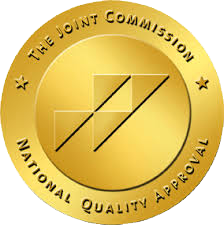As anyone who has completed a 30-day treatment program before can tell you, a major task of these programs is to help the recently sober individual learn to engage in a structured and regimented system. It is somewhat analogous to the college experience in that they are both essentially crash courses that help prepare us for the real world. It is imperative that, post-treatment, we maintain this type of scheduled behavior as an antidote to the insanity we created while in active addiction. Before we discuss pragmatic steps to achieving gains in our nutrition planning and exercise regimen, we need to recognize that, just as we do in the program, we need to “KISS” or Keep It Simple, Stupid. We want to avoid burning out in any capacity and in order to ensure both our nutrition programs and exercise routines remain consistent, we need to set realistic goals.
First let’s discuss the primary issue that people associate with the desire to eat better and exercise more which is the desire to lose weight. As is the case with addiction treatment, there are a myriad of ways to approach weight loss. The relevant nutritional literature busts wide open a long-held myth within dietary studies that shows us that the most effective route to weight loss is not the reduction of fat intake, but rather the reduction of carbohydrate intake. Rather than taking an extreme approach, early on in our recovery we can try and consume carbs in moderation. This is a reasonable place to begin as we do not want to starve our bodies of carbs because we don’t want to risk a rebound affect where we fall off the dietary plan and begin recklessly consuming bread, soda, and doughnuts; remember, we are addicts after all!
Secondarily, we want to be consuming both proteins and vegetables as much as possible as protein facilitates muscle hypertrophy and vegetables provide us with essential nutrients and vitamins. The final part of this simple prescription can be stated as “More Water/Less Soda. Drinks containing a lot of sugars are dangerous because we often don’t consciously consume sodas and other sugary drinks with diet in mind as it can be justified as, “well, it’s just a drink.” While this is technically true, that sugar converts to fat in our bodies unless used as fuel. As a final note, engaging in any exercise in early recovery is extremely important for the production of “feel-good” neurotransmitters, and also for general physical health. We don’t want to get too caught up in what it is we do for exercise in early sobriety; we just want to ensure we are doing something (i.e. basketball, surfing, jogging, lifting weights, etc.). In sum, we want to consume less sugars and carbs, more proteins and vegetables, drink water, and exercise regularly. In our next article, we will progress to a more advanced dissection of nutrition and diet for the moderately seasoned addict in recovery.
Tree House Recovery of Orange County, California is a premier men’s addiction treatment facility that uses eight different modalities to help our men become the best versions of themselves they can be. We teach our men that every day of their journey is something to celebrate, and that recovery isn’t a sprint– it’s a marathon. By showing our men how to celebrate each day’s victories, we show them that self love isn’t about what we have or haven’t done. It’s about getting a little closer to where we want to be. To get started with Tree House Recovery, call us today at (855) 202-2138.






